In our previous content, we explored the types of boat fenders in detail. In this post, we will give you a detailed overview of the different types of rubber fenders.
Rubber fenders have long been known to act as “bumpers”. These fenders act as a buffer at the berth of a ship, preventing damage to the hull of the ship as well as the dock from impact. They reduce damage by absorbing the energy generated during a collision, ensuring that the ship is docked safely. There are various types of rubber fenders depending on the different needs of ships and docks. And each has unique features and advantages.
These fenders are now widely used in ports, wharves, docks and other marine environments. In particular, they are widely used in berthing places for large merchant ships, oil tankers, container ships and so on. It provides strong protection when the ship is docked.
Today, Henger will take you through several common types of rubber fenders to help you choose the right solution.
Table of Contents
Ship-to-Dock (STQ) Fenders
Ship-to-Dock fenders are designed to prevent direct collisions between ships and docks, thus preventing damage to the hull of the ship or the dock. The type of fender chosen usually requires high energy absorption capacity and low reaction forces to effectively withstand strong impacts. Common types are:
Cylindrical Fenders
Cylindrical fenders are a common and economical type of fender. This type of fender is usually mounted on the hull of a boat or a dock with a suspension. It is currently used in a wide range of marinas and ship berths.

Advantages
- Easy to install
- Highly adaptable
- Good balance between energy absorption and reaction forces.
V-Fenders
V-fenders, also known as arch fenders, are an upgraded version of cylindrical fenders. This fender provides a better energy absorption/reaction force ratio and better energy absorption. At the same time, it is easy to install and does not require any maintenance.

Advantages:
- Improved energy absorption/reaction force ratio
- Provides more efficient protection
- Suitable for all types of mooring structures
Super cell fenders
Super Cell Fenders are the fender type with the lowest reaction force, suitable for medium and large vessels. Its compact geometry is strong and shear-resistant, absorbing energy efficiently from all directions and significantly reducing collision damage to ships and terminals. Compared with ordinary rubber fenders, Super Cell Fenders perform better in terms of energy absorption and reaction force ratio, and the E/RH value of Super Cell Fenders is about 15% higher than that of ordinary fenders. Meanwhile, its structure design is more rational, the smooth transition flange connection reduces the stress concentration, improves the performance in high-impact environments, and the shrinkage rate is also increased to 52.5%.
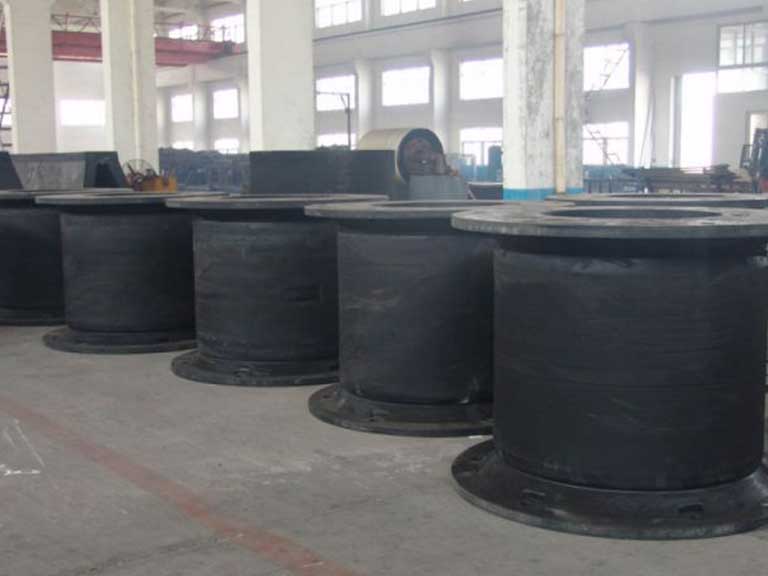
Advantages
- High shear resistance
- High energy absorption efficiency
- Suitable for small, medium, and large vessels
- Effective reduction of reaction forces
Super Cone Rubber Fender
The Cone fender adopts a new design of a conical rubber body and front steel frame. This design can increase the shrinkage deformation from the conventional 52.5% to 70%, which is the most advanced type of rubber fender at present. This type of fender allows for a lighter structural design of the terminal, which effectively reduces the total project cost. It is similar to the Super Drum rubber fender in that it absorbs energy from all sides. However, it is worth mentioning that it produces greater deflection. And this fender is cheaper than Super cell fenders when it comes to generating the same reaction force and energy absorption.
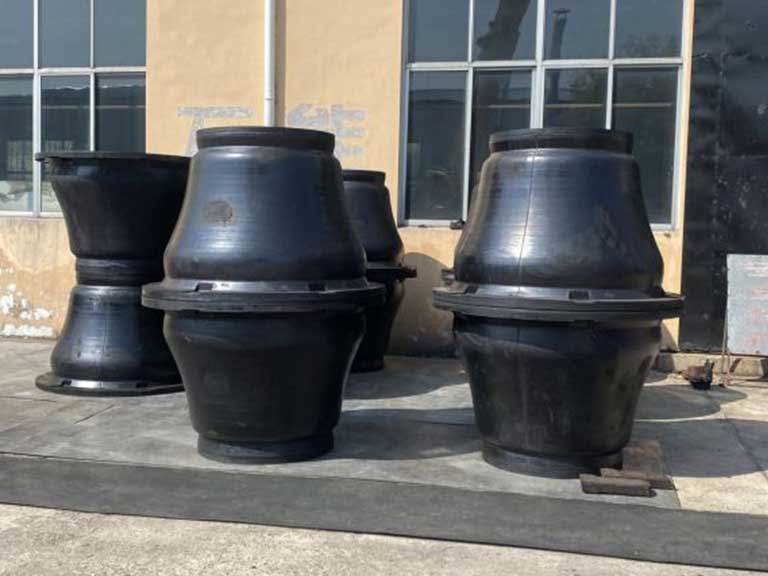
Pros:
- Reduced costs
- Adaptable to complex harbor environments
- Better absorption of energy from multi-directional collisions.
Ship-to-Ship (STS) Fenders
Ship-to-ship fenders, as the name suggests, are used as collision protection fenders between two ships. These fenders then need to provide excellent energy absorption capabilities and low reaction forces to help minimize hull damage. Common types include:
Inflatable Fenders
Inflatable fenders, also known as pneumatic fenders or Yokohama fenders, are a common type of boat protection. It is usually cylindrical in shape and filled with air, allowing it to float on the water’s surface to perform its job. Inflatable fenders are available in a number of different pressure ratings and sizes, depending on the use required. Inflatable fenders provide excellent collision energy absorption protection during ship-to-ship operations. At the same time, inflatable fenders also have the ability to absorb large amounts of energy at low deflections, effectively minimizing damage to ships and facilities. Today, it is widely used in ship-to-ship, cargo transfer and other marine operations.
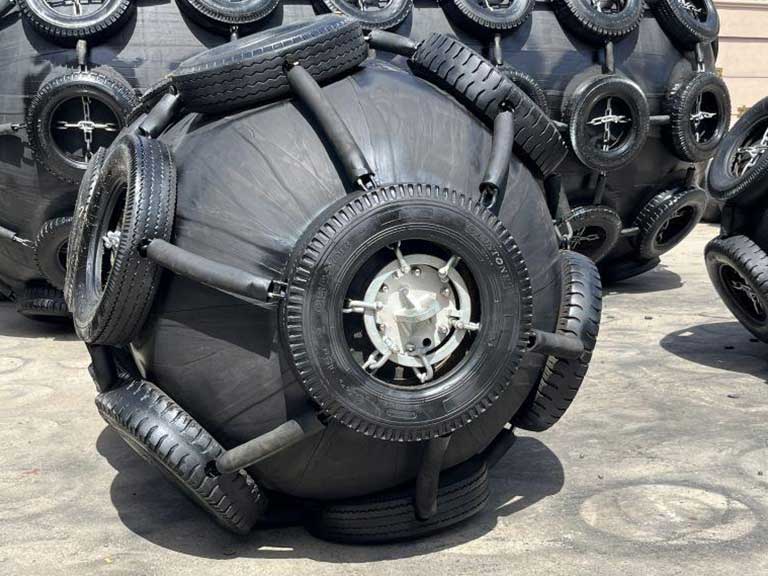
Advantages:
- Strong adaptability
- Light weight and easy to install
- Extremely high energy absorption capacity
Foam Rubber Fenders
Foam Rubber Fenders are made of closed-cell foam (e.g., polyethylene foam) encapsulated in a strong nylon or Kevlar-reinforced polyurethane skin. Unlike pneumatic fenders, foam fenders are structurally designed so that even if the outer layer is damaged, the core foam of the fender remains functional and continues to provide effective collision mitigation protection. They are often used in berthing operations for large tankers, cargo ships and other heavy vessels. The specific differences between the two are explained in more detail in our previous Pneumatic Fenders vs. Foam Fenders comparison.

Pros:
- Durable and seawater resistant.
- Strong ability to absorb and mitigate energy
- Easier maintenance
- Longer life span
Specialty Fenders for Various Ship Types
In addition to some of the common fenders mentioned above, different types of ships require specialized fenders based on their specific needs. These fenders are designed to take into account the specific operating environment, size, weight, and other unique usage scenarios of the vessel. Common types of specialized fenders include:
D-type Fenders
D-type fenders are fenders designed for smaller vessels and are made of marine grade flexible PVC. Steel inserts can also be compression molded upon request. Due to its low cost and durability, this is the most commonly used type of rubber fender.
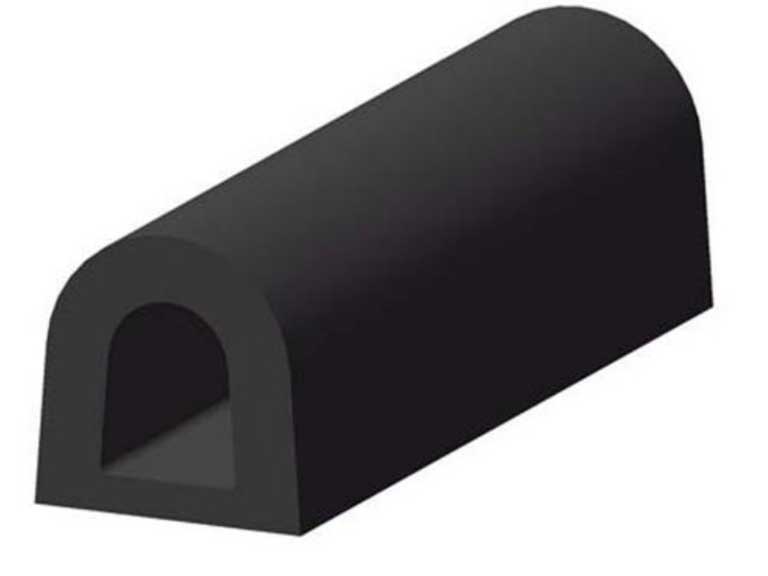
Benefits:
- Good protective properties
- Simple construction
- Easy to install and maintain
- Lightweight material
- For dockside installations in tight spaces.
Square Fenders
Square Fenders are press molded for basic protection of small vessels and docks. Its compact shape is ideal for applications in limited spaces.
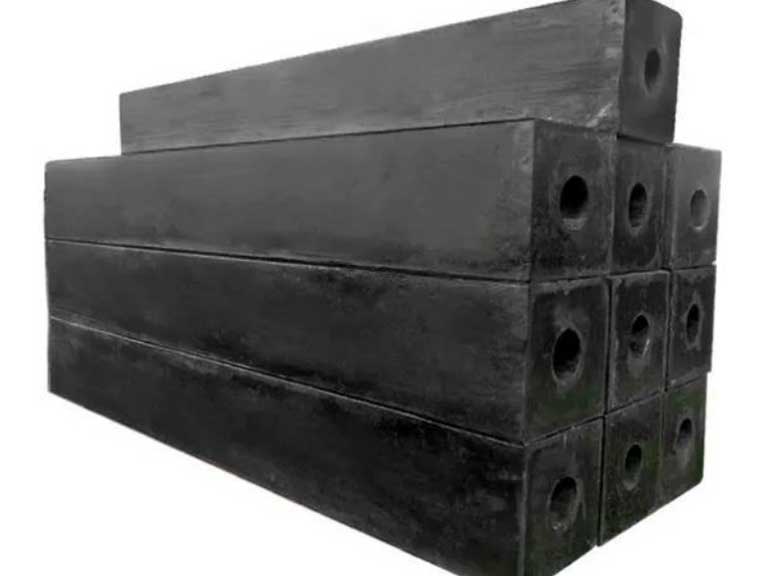
Benefits:
- Compact design
- Good energy absorption
- Simple construction
- Quick installation process
- Stable protection
Wing Fenders
Wing fenders, also known as DO fenders, are made of molded design. It is a derivative of the D-type fender and has a higher reaction force and energy absorption capacity than the D-type fender. With excellent seawater resistance and UV resistance, this fender is often used for berthing protection for tugboats, small vessels, and ships.
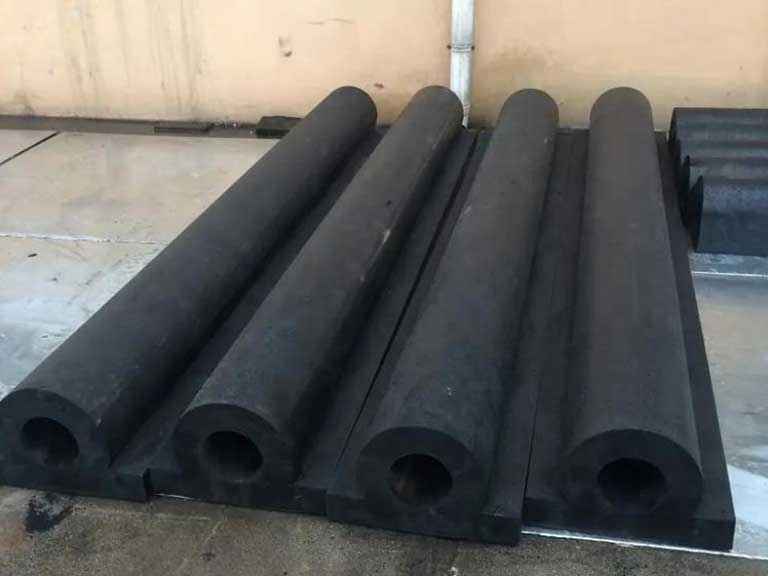
Advantages:
- High reaction force and energy absorption capacity
- Excellent resistance to seawater, UV aging and ozone
- Long service life
Tug Boat Fenders
Tug boat fenders are cylindrical fenders made of highly abrasion-resistant rubber with good elasticity. They protect rounded contours and are therefore often installed at the bow and stern of ships for towing operations. Like the fenders mentioned above, they have an excellent service life.

Advantages:
- Withstanding high impact forces
- Excellent abrasion resistance and elasticity
- Suitable for frequent and intense maneuvers
Choosing The Right Type Of Rubber Fender
Choosing the right rubber fender is key for safe docking. Our fenders protect vessels and docks in many marine settings.
Marine Applications
Rubber fenders fit various vessels, from small boats to big ships. Each needs a specific fender for its docking needs. Our fenders offer the best protection in different marine areas.
Dock Protection
Dock fenders absorb impact during docking. They protect both the ship and the dock from damage. Our fenders reduce impact, saving on repairs and downtime.
Factors to Consider When Choosing Rubber Fenders
When picking fenders, consider the vessel size, docking speed, and the environment. Our fenders meet ISO9001-2008 standards and are certified for marine use.
Conclusion
To keep marine vessels safe and durable, knowing about rubber fenders is key. At Henger Shipping Supplies, we have a wide range of top-notch marine fender solutions. Our products, like Yokohama fenders, are made to fit different needs.
It’s important to keep rubber fenders in good shape and replace them when needed. This extends the life of your rubber fenders and protects your assets. Using quality rubber fenders can also cut down on maintenance costs and make your operations safer.
Get in touch with our experts to talk about your marine fender needs. Discover how our ISO-certified products can boost the safety and life of your maritime assets.
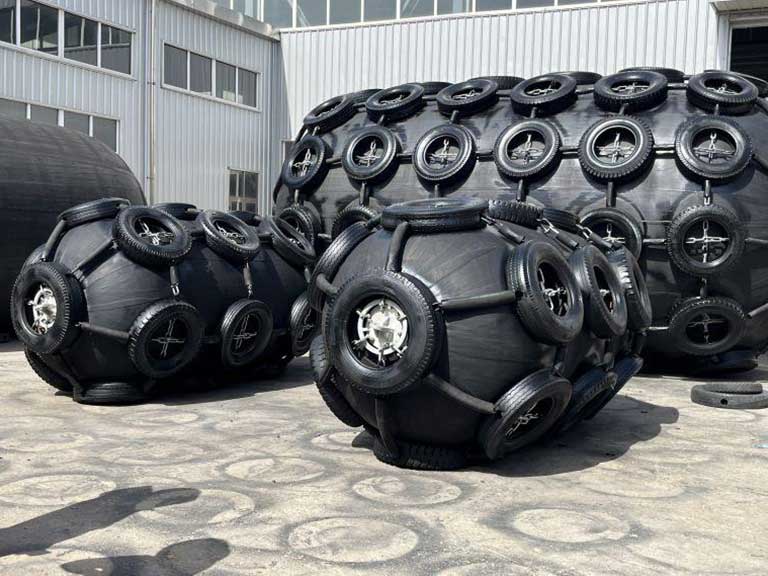
FAQ
What are the primary functions of marine fenders?
Marine fenders soak up the energy of a docking vessel. They protect both the vessel and the dock from damage. They also spread out the force of impact, which can save on repair costs.
How do I choose the right fender for my marine application?
Choosing a fender involves looking at several things. We consider the size and type of vessels, the docking conditions, and how much protection is needed. We also check the fender’s energy absorption, reaction force, and durability for the best performance.
What are the benefits of using pneumatic fenders, such as Yokohama fenders?
Pneumatic fenders, like Yokohama fenders, are great for big vessels and exposed docking spots. They absorb a lot of energy and have a low reaction force. Plus, they’re very durable and can handle tough marine environments.
Can rubber fenders be used in various marine environments?
Yes, our rubber fenders can handle different marine conditions. They work well in various temperatures, salt levels, and sunlight. We make them with high-quality materials that last a long time.
How do I ensure the quality and reliability of my rubber fenders?
We make our fenders to international quality standards, including ISO. They go through tough tests to make sure they meet performance and safety standards.
What maintenance is required for rubber fenders?
It’s important to regularly check and maintain your fenders. Look for wear, damage, or degradation. Replace them as needed to keep them working well.

